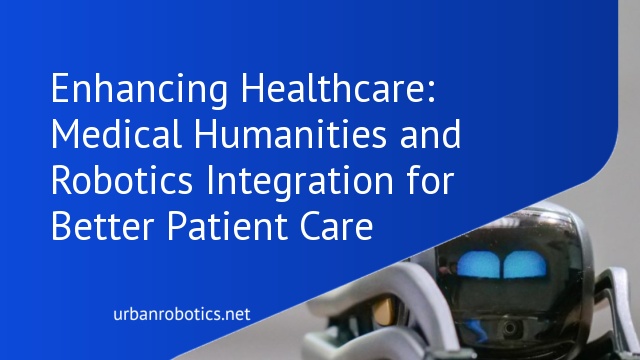Understanding Medical Humanities
Medical humanities encompass humanistic disciplines like ethics, history, philosophy, and the arts within healthcare. These fields connect us to the emotional, ethical, and cultural dimensions of medicine. When integrated into healthcare, medical humanities shift our focus from mere treatment to patient-centered care.
Ethics, as part of medical humanities, guide decision-making processes. They help in navigating complex moral dilemmas in patient care. For instance, ethical considerations in AI algorithms ensure fairness and transparency.
History offers insights into the evolution of medical practices and societal impacts. Studying medical history fosters an understanding of past successes and pitfalls, improving future practices.
Philosophy encourages critical thinking and reflective practices among healthcare professionals. Engaging with philosophical concepts enhances our ability to address fundamental questions about life, health, and human existence.
The arts, including literature, visual arts, and drama, foster empathy and communication skills. They provide tools for expressing patient experiences, aiding in compassionate caregiving.
Incorporating medical humanities in healthcare systems with robotics ensures holistic patient care, blending technological advancements with humanistic understanding.
Role of Robotics in Healthcare Systems
Robotics plays a vital role in modern healthcare. By integrating medical humanities, we merge technical precision with human-centered care.
Evolution of Robotics in Healthcare
The evolution of robotics in healthcare began with simple assistive devices and escalated to sophisticated surgical robots. In the 1980s, the first robotic surgery took place. Today, robots perform complex procedures, enhance diagnostic accuracy, and streamline administrative tasks. Each technological leap has pushed the boundaries of precision, efficiency, and patient safety, driving continuous innovation in the field.
Key Technologies and Innovations
Robotics innovations include surgical robots, telepresence robots, and robotic exoskeletons. Surgical robots, like the da Vinci System, enable minimally invasive procedures. Telepresence robots allow remote consultations and monitoring, improving access to care. Robotic exoskeletons help patients with mobility impairments regain function and independence. These advancements underscore the transformative impact of robotics in healthcare, bridging gaps between technology and patient needs.
Integrating Medical Humanities with Robotics
Medical humanities and robotics together create a balanced approach in healthcare, merging empathy with technology. This synthesis elevates patient care and fosters ethical medical practices.
Ethical Considerations
Ethical frameworks in medical humanities shape how we integrate robotics. Ensuring patient autonomy, privacy, and consent is crucial. For instance, surgical robots enhance precision, but physicians must ensure informed consent. Balancing efficiency and human values mitigates potential ethical dilemmas. Referencing the four principles of biomedical ethics—autonomy, beneficence, non-maleficence, and justice—guides responsible implementation.
Patient-Centered Care Models
Patient-centered care models emphasize personalized treatment, making robotics support essential. Robotics, like telepresence robots, enable remote consultations, promoting accessibility. Robotic exoskeletons aid mobility, enhancing patient independence. Integrating humanities ensures these technologies address individual patient needs, fostering trust and satisfaction. The synergy of robotics and humanities reshapes care, emphasizing holistic, individualized treatment approaches.
Benefits and Challenges
Combining medical humanities with robotics in healthcare offers significant benefits and notable challenges. These elements shape patient interactions and treatment efficacy.
Advantages in Patient Care
Robotics, when integrated with medical humanities, elevates patient care by enhancing empathy. Technology like telepresence robots enables remote consultations, improving accessibility for underserved areas. Exoskeletons assist in rehabilitation, leading to faster recovery times and increased mobility. This synergy fosters personalized treatment plans, contributing to improved patient outcomes and satisfaction.
Potential Drawbacks and Concerns
Despite numerous benefits, integrating medical humanities with robotics presents challenges. Ethical concerns arise around patient autonomy and privacy, especially with data handling by robotic systems. There may also be resistance from healthcare professionals adapting to new technologies. Financial constraints could limit the adoption of advanced robotics, affecting equitable healthcare distribution. Addressing these issues is crucial for successful implementation.
Case Studies
Integrating medical humanities with robotics in healthcare systems has led to notable advancements. We examine successful implementations and the lessons learned from these innovations.
Successful Implementations
In the US, Massachusetts General Hospital uses telepresence robots to facilitate remote consultations. These robots ease access for rural patients and enhance provider-patient communication. Meanwhile, UCSF Medical Center employs robotic exoskeletons in physical rehabilitation. Patients experience faster recovery times and improved mobility due to personalized treatment plans developed by combining technological precision and human-centered care.
Lessons Learned
Case studies reveal that effective integration requires collaboration between technologists and healthcare professionals. At Johns Hopkins Hospital, implementing robotics highlighted the need for rigorous ethical guidelines to protect patient autonomy and privacy. Another lesson from Cleveland Clinic was addressing resistance from staff through comprehensive training programs. Financial investments in infrastructure and personnel training proved equally critical for successful adoption.
Future Directions
Exciting developments lie ahead in integrating medical humanities with robotics in healthcare. These advancements promise further enhancements in patient-centered care and ethical considerations.
Emerging Trends
Recent trends highlight the growing focus on AI-driven robots and their ethical applications. For example, AI algorithms now analyze patient data, offering personalized treatment plans while maintaining privacy standards. Additionally, social robots that engage patients emotionally are gaining traction. These robots, like Paro the therapeutic robot, help reduce anxiety in patients, showcasing the merger of empathy and technology.
Research Opportunities
Significant research opportunities exist in the interdisciplinary field of medical humanities and robotics. Investigating the impact of robotic caregivers on patient autonomy can provide insights into ethical practice. Another key area is studying how immersive technologies, like VR-based rehabilitation with robotic exoskeletons, influence recovery durations. By focusing on these research avenues, we can further bridge humanities and technology in healthcare systems.
Conclusion
As we continue to integrate medical humanities with robotics in healthcare, the potential for improving patient-centered care is immense. By prioritizing ethical considerations, we can ensure that advancements in technology respect patient autonomy and privacy. Innovations like AI-driven robots and social robots for emotional support open new avenues for personalized treatment plans.
Future research will play a crucial role in understanding the impact of robotic caregivers and immersive technologies on patient outcomes. By merging humanities and technology, we can create healthcare systems that are not only advanced but also compassionate and ethical. The journey ahead promises exciting developments that will redefine patient care for the better.





